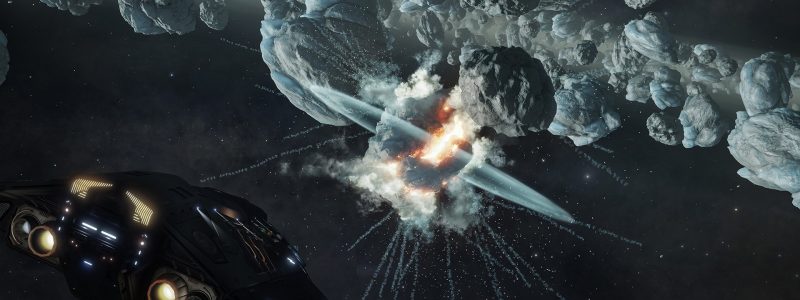Unladen Mass is a frequently overlooked stat in Elite. I would guess most pilots have never given it more than a passing thought. You can’t change it, after all, and the real metagame is getting the right weight on the modules themselves. Isn't it?
The thing about a ships unladen mass is it actually gives you a general idea of how you should prioritize your weight reductions, or if it’s not going to be worth it in the first place. Since basically everyone cares about their jump range and it’s the cleanest comparison anyway, let’s go in that direction for an example.
Go to EDSY or Coriolis, and arrange all the ships by FSD size, from heaviest to lightest, from class 7 to 2. You’ll immediately notice that you get a pretty uneven distribution; there are three ships that are class 7, but fourteen ships that are class 5, and so on. You’ll also see that ships within each FSD category generally have similar unladen mass. I’m sure you get where I’m going with this.
But here’s a table with the most succinct example, the three class 6's sorted from heaviest to lightest:
| FSD | unladen mass | |
|---|---|---|
| Federal Corvette | 6 | 900 |
| Type 9 | 6 | 850 |
| Anaconda | 6 | 400 |
And wouldn’t you know it, they’re roughly organized by how awful they are at jumping. The Corvette is bad, the T9 is actually slightly better and the Anaconda is the Anaconda.
So yeah here’s how that looks with the 5's:
| FSD | unladen mass | |
|---|---|---|
| Federal Dropship | 5 | 580 |
| Federal Gunship | 5 | 580 |
| Alliance Crusader | 5 | 500 |
| Federal Assault Ship | 5 | 480 |
| Alliance Challenger | 5 | 450 |
| Alliance Chieftain | 5 | 400 |
| Anaconda | 6 | 400 |
| Imperial Clipper | 5 | 400 |
| Python | 5 | 350 |
| Type 7 | 5 | 350 |
| Krait Mk2 | 5 | 320 |
| Orca | 5 | 290 |
| Asp Explorer | 5 | 280 |
| Krait Phantom | 5 | 270 |
| Diamondback Explorer | 5 | 260 |
Oh whoops, maybe someone fat-fingered that at FD, or maybe the Anaconda was intended to be lighter than five ships from the FSD category below it. Either way, we see that the Asp, the Phantom, and the Diamondback should presumably make good jumpers, while the Fed and Alliance ships are not. And that the Anaconda is the Anaconda.
So hey that’s cool.
But the other thing to keep in mind is that you’ve actually got to put modules on your ship; unladen mass even excludes your core modules, it’s just the weight of your ship’s bare frame. So there exists a relationship between your hull weight and your module weight, and this balance imprecisely determines the performance of… actually a lot of stuff, if only to a small degree. But to keep the example related to jump range, let’s look at two of the most disproportionately lightweight ships in the game: the Anaconda and the Hauler.
| Anaconda | Hauler |
|---|---|
| FSD 6 | FSD 2 |
| 400 Ton Hull | 14 Ton Hull |
| 23Ly (core modules only, all A-rated, 972 tons laden) | 28Ly (cores only, all A-rated, 28 tons laden) |
Everything seems normal here. An A-rated Anaconda with no optionals is a bit over twice it’s hull weight, and it ends up jumping ~23. Hauler has only flat-doubled it’s weight and actually jumps better than the Annie in this configuration. Now let’s tweak the hull/module ratio a bit:
After having coriolis do a lazy fit for jump range, it goes:
| Anaconda | Before | After | Weight change |
|---|---|---|---|
| Powerplant | 8A (80t) | 2A (1.3t) | -78.7 tons |
| Thrusters | 7A (80t) | 5D (8t) | -72 tons |
| Life Support | 5A (20t) | 5D (8t) | -12 tons |
| Power Distro | 8A (160t) | 5A (20t) | -140 tons |
| Sensors | 8A (160t) | 8D (64t) | -96 tons |
| Old weight: | 972 tons | Total savings: | 398.7 tons |
| New weight: | 573.3 tons | New jump range: | ~39Ly (+16) |
Look at that, we cut damn near an entire Anaconda’s worth of performance off of it!
| Hauler | Before | After | Weight change |
|---|---|---|---|
| Powerplant | 2A (1.3t) | 2D (1t) | -0.3 tons |
| Thrusters | 2A (2.5t) | 2D (1t) | -1.5 tons |
| Life Support | 1A(1.3t) | 1D (0.5t) | -0.8 tons |
| Power Distro | 1A(1.3t) | 1D (0.5t) | -0.8 tons |
| Sensors | 1A(1.3t) | 1D (0.5t) | -0.8 tons |
| Old weight: | 28 tons | Total savings: | 1.5 tons |
| New weight: | 26.5 tons | New jump range | ~33Ly (+5) |
Results are… a bit more disappointing. But that was going to be obvious: look how much of the Anaconda’s laden weight is just core internals. The Hauler can’t actually get very close to it’s hull weight with a functional fit as there’s nothing you can really downsize with it. Meanwhile, the Anaconda can fly while fitted under 580 tons, meaning it can utilize that class 6 jump while weighing less than the bare frame of a federal dropship (the heaviest class 5).
So, why does this matter? With engineering nowadays most ships can do whatever job you need. But the number does still suggest to us how we might prioritize our builds; light hulled ships tend to benefit from light loadouts. My favorite example, the ICourier, sees better performance out of its EPThrusters with a combat fit than the Eagles and Vipers out there by sole virtue of being 15 tons lighter, despite the others straight-up having a superior flight profile. Meanwhile, heavy ships like, say, the T10, often don't care what sort of heavy-duty nonsense you want to throw at them: 100 tons of armor is a relatively small number for it, that being only 9% of its hull weight. It also shows us that, on the lower end, it can be less helpful to limit weight; that hauler example from earlier would be miserable to fly, certainly not worth the 5 ly we dropped all that weight for.
Source: https://www.reddit.com/r/EliteDangerous/comments/qbkdys/unladen_mass_for_dummies/






